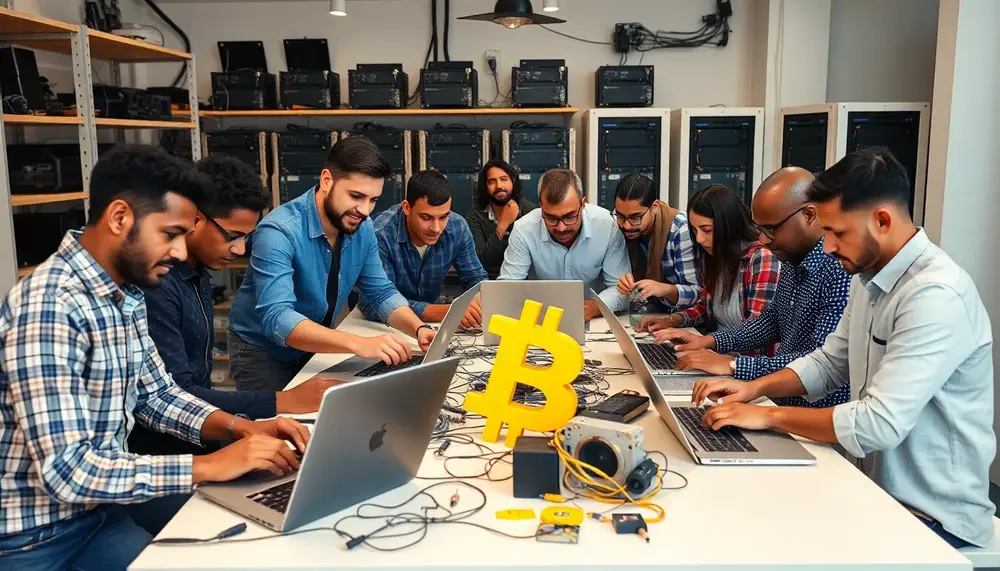Bitcoin Nostalgia: A Look Back at the Early Years and Current Perspectives
Eleven years ago, the documentary ‘The Rise and Rise of Bitcoin’ premiered at the Tribeca Film Festival, offering a fascinating insight into the beginnings of the cryptocurrency. The film, created by Daniel Mross, an early Bitcoin miner and founder of the investment fund Maximalist Capital, together with his brother Nicholas, documents the rapid development of Bitcoin and the challenges faced by the pioneers of the industry. According to it boltwise, Daniel Mross, a computer programmer from Pittsburgh, began mining Bitcoin in 2011 and quickly became one of the first investors in the field. The documentary follows his journey around the world to meet key figures in the Bitcoin community, including Charlie Shrem, Eric Voorhees, and Mark Karpeles.
These personalities played a crucial role in the development of Bitcoin, especially at a time when the market was still young and unpredictable. The documentary also highlights the challenges Bitcoin faced, such as the problems at Mt. Gox, which underscored the need for more crypto exchanges. Brian Armstrong and Fred Ehrsam from Coinbase also appear, demonstrating the importance of creating new platforms to meet growing demand.
A notable moment in the film is the encounter with Gavin Andresen, then the lead developer of Bitcoin. His neighbors were unaware of the significance of his work, emphasizing the anonymity and revolutionary nature of Bitcoin in its early days. Such scenes evoke nostalgic memories among many Bitcoin enthusiasts of a time when the technology was still in its infancy.
The documentary also illustrates the challenges of Bitcoin mining. Daniel Mross started with a simple mining setup in his basement but soon realized that competition and the costs for necessary hardware increased exponentially. This development led to mining being increasingly dominated by large companies, which called into question the original idea of Bitcoin’s decentralization.
For those longing for the early days of Bitcoin, there are two possible ways to alleviate this nostalgia: using Bitcoin as a means of payment and experimenting with open-source mining rigs. These approaches could help restore the original sense of decentralization and independence that once characterized Bitcoin.
Today, Bitcoin is much more than just a digital currency. It has become an important part of the global financial world and continues to influence how we think about money and transactions. Despite the challenges and changes, the fascination with Bitcoin remains unbroken, and the documentary ‘The Rise and Rise of Bitcoin’ reminds us how it all began.
| Key Figures | Role | Contribution |
|---|---|---|
| Daniel Mross | Early Miner, Investor | Documented Bitcoin’s rise, started mining in 2011 |
| Charlie Shrem, Eric Voorhees, Mark Karpeles | Community Leaders | Shaped early Bitcoin development |
| Brian Armstrong, Fred Ehrsam | Coinbase Founders | Created new platforms for growing demand |
| Gavin Andresen | Lead Developer | Maintained Bitcoin’s codebase, highlighted anonymity |
- Early mining was accessible but quickly became dominated by large companies due to rising costs and competition.
- Key challenges included exchange failures (e.g., Mt. Gox) and the need for more robust infrastructure.
- Restoring the original spirit of Bitcoin is possible through direct use as payment and open-source mining.
The documentary ‘The Rise and Rise of Bitcoin’ offers a unique look at the early days of the cryptocurrency, when Bitcoin was still a niche phenomenon. — it boltwise
Infobox:
- The documentary ‘The Rise and Rise of Bitcoin’ premiered eleven years ago and provides a detailed look at the early Bitcoin community.
- Early mining was accessible but quickly became industrialized.
- Key figures such as Daniel Mross, Charlie Shrem, and Gavin Andresen played pivotal roles.
- The original spirit of decentralization can be revived through direct Bitcoin use and open-source mining rigs.
(Source: it boltwise)
Sources:















